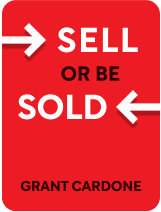

This article is an excerpt from the Shortform book guide to "Sell or Be Sold" by Grant Cardone. Shortform has the world's best summaries and analyses of books you should be reading.
Like this article? Sign up for a free trial here .
How do you provide effective customer service? What should you never prioritize over customer satisfaction?
The secret to providing effective customer service is to prioritize the satisfaction of the customer above all else. You must never prioritize rigid company policy and sales processes above the happiness of your customer.
Read on to discover the principles of effective customer service.
Rules of Effective Customer Service
No matter what you’re selling, your priority should be people. Don’t think of your job as selling products—think of it as helping people make good decisions and solve their problems. Effective customer service has a karmic effect—you’ll receive something (such as a sale) in return and you’ll have tremendous freedom and confidence to sell whatever you like to whomever at whatever price.
To prioritize the customer and provide effective customer service:
1. Focus on her from the moment she arrives until the moment she leaves, even if you don’t think she’s likely to buy anything. Don’t take calls, answer emails, or let anything else interrupt your time together. Most people don’t get as much attention as they’d like in life, so if you provide this, you’ll meet a need.
2. Think like the customer to anticipate her wants. This will show the customer that you want to help her. Exceed her expectations.
- For example, if a customer asks for a drink, Cardone opens the bottle for her and gives her a glass, ice, and a napkin. This shows he’s willing to go above and beyond.
3. Take an interest in her. Become more interested in her than you are in anything else, including your commission and yourself. Exchange ideas and ask questions—for example, you might ask what she likes or doesn’t like about what she already owns. This will help you get information about what she values that you can use to help her find the perfect product. Asking questions isn’t sleazy—you’re not amassing information to manipulate the customer later; you’re trying to help. (The sales-y trick of responding to questions with new questions is manipulation and will never work.)
- For example, when Cardone wanted to buy a computer, the salesman at the first store he went to rattled off technical specs and so overwhelmed Cardone that he didn’t buy anything. Later, Cardone went to a different store and encountered a salesperson who asked him questions about what he wanted the computer for. He was so helpful that Cardone bought three computers and additional accessories.
4. Maintain your interest in the customer even after you’ve made (or not made) a sale.
5. Resolve post-sale problems personally. Any time a customer has a problem, it’s an opportunity to provide service. Seek out problems (for example, call to check in on a product) and handle them. This will also create opportunities for sales in the future.
6. Use organizational aids, such as customer relationship management (CRM) tools, to help you remember details about specific customers such as contact information, pet peeves, likes and dislikes, loved ones, colleagues, and anything else you find out. Once you build up your network, you’ll have many past and potential customers to keep track of, as well as multiple sales cycles open at the same time. Never throw out data, even if you leave a job—you might want to talk to some of your past customers in the future.
You can check your service skills by asking yourself the following questions. If you answer yes to any of them, you are falling short in providing effective customer service.
- Do customers ask you for better prices? If you were giving them good service, they would think the price was appropriate because it included service. Most people want good products and service more than they want to save.
- Does your competition outsell you, regardless of price and product quality? If you provide good service, it shouldn’t matter if your product is more expensive than your competitors’—lower prices mean less service, and many people don’t like that trade-off. Additionally, having a better product is temporary—new products are invented all the time and get cheaper as they develop. Service, on the other hand, is always valuable—people like convenience and being treated well.
Pitfalls
Effective customer service never prioritizes the following over customers:
1. Product knowledge. You do need to know the benefits of the product and how it matches up against competitors’ products, but only 20% of selling is product-related (the other 80% is people-related).
2. Sales processes. Sales processes are step-by-step plans for approaching a customer and getting a sale. They’re often developed by management even though management is almost never buying or selling the product. If a process inconveniences a customer, don’t use it. (See Part 3 for more on good sales processes.)
- For example, one of Cardone’s friends was a real estate salesman whose company’s sales process required its salespeople to always meet with clients at its offices. Cardone didn’t want to go to his friend’s office because it was inconvenient, but his friend insisted. Cardone refused. His friend relented and they met at Cardone’s home, but had his friend adhered to the process, he would have lost the sale.
3. Company policy. Some company policies, like sales processes, don’t prioritize the customer. If you follow the policies, you’ll miss sales.
- For example, when Cardone learned about the Hummer H2, he immediately wanted one and called a dealership to ask for the price. The salesperson wouldn’t give him the price over the phone—company policy forbid it because it encouraged people to shop around. It hadn’t occurred to Cardone to shop around before; the policy actually planted the idea.

———End of Preview———
Like what you just read? Read the rest of the world's best book summary and analysis of Grant Cardone's "Sell or Be Sold" at Shortform .
Here's what you'll find in our full Sell or Be Sold summary :
- How your happiness and even survival depend on your selling ability
- The five steps to becoming a master salesperson
- Step-by-plans to lead the customer to make a purchase






